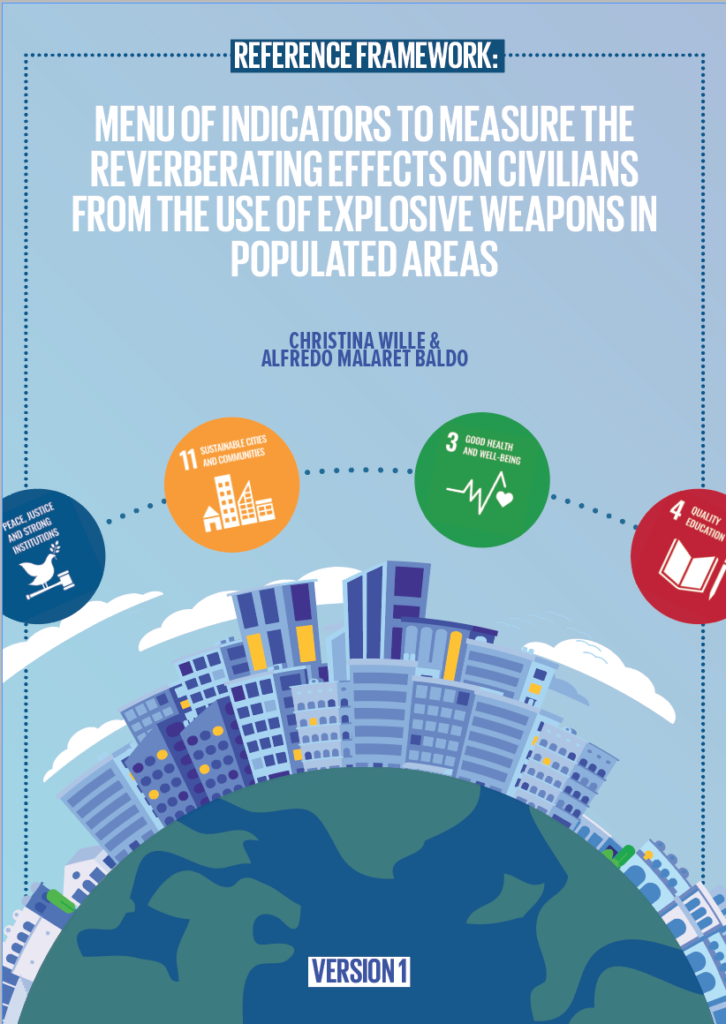The impacts of explosive weapons use in populated areas are much wider and longer lasting than the shock waves of the explosive blast. The use of explosive weapons sets in motion a series of complex knock-on effects that spread out over time and space in urban ecosystems, with negative consequences for civilian well-being and the environment in which people live. These “reverberating effects” manifest across a wide range of interlinked sectors, including urban infrastructure, public health, education, culture and heritage, food security, economic prospects, and adverse environmental impacts. The purpose of this research framework is to offer indicators to document knock-on effects and potentially inform and influence the policy and practice of parties to conflict. This document aims to shed light on the generalized pattern of harm from the use of explosive weapons in populated areas (EWIPA). By using a standardized set of indicators, the data generated can be leveraged to build a comparable evidence base reflecting the consequences to civilian well-being of the use of EWIPA and to inform high-level decision-making on policy and practice.
Sponsor Organizations: Germany
Citation: Christina Wille and Alfredo Malaret Baldo (2021) "Menu of Indicators to Measure the Reverberating Effects on Civilians from the Use of Explosive Weapons in Populated Areas", UNIDIR, Geneva, Switzerland. https://doi.org/10.37559/CAAP/21/PACAV/01
